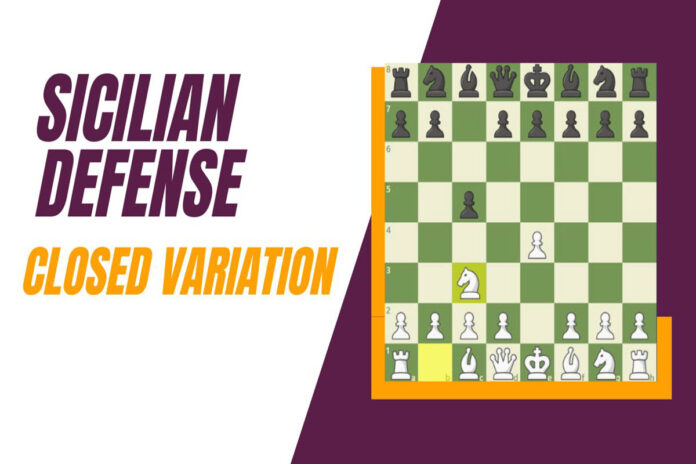In the vast world of chess, there are myriad opening strategies that players can adopt. Among the most prominent is the Sicilian Defense, a classical response to 1.e4 that has seen innumerable high-level games since it was first introduced. One of its many branches is the Closed Variation, a rich, complex, and less charted territory compared to the Open Sicilian. The Closed Variation has been a preference for those who wish to explore strategic battles over tactical skirmishes.
How To Play The Sicilian Defense Closed Variation?
The Closed Variation of the Sicilian Defense starts with the moves:
1.e4 c5 2.Nc3
While the Open Sicilian is initiated with 2.Nf3 and 3.d4, aiming to immediately control the center, the Closed Variation, as the name suggests, does not open the center right away. It invites a slower, more positional game.
Concepts Behind The Sicilian Defense Closed Variation
One of the main ideas behind 2.Nc3 in the Closed Variation is to control the d5 square. If Black chooses to advance d7-d5, White can respond with e4xd5. By moving 2.Nc3, White also prepares for a potential f2-f4 advance to strengthen control over the e5 square and begin a potential kingside pawn storm.
On the other hand, Black continues to expand on the queenside and retain flexibility for his central pawns. Black’s pawn structure often remains solid and less compromised in the Closed Sicilian compared to the Open variation.
Sub-Variations
There are a couple of different directions the game can take after the initial moves, leading to multiple sub-variations, two of which are:
- The Closed Sicilian – Grand Prix Attack (1.e4 c5 2.Nc3 Nc6 3.f4 g6 4.Nf3 Bg7). Here, White seeks an aggressive approach with the f-pawn advance, establishing a strong center, and aiming to quickly develop the kingside pieces.
- The Closed Sicilian – King’s Indian Attack (1.e4 c5 2.Nc3 d6 3.g3 Nc6 4.Bg2). This setup resembles the King’s Indian Defense, but from the white side. The fianchetto setup is less aggressive but offers a solid position and harmonious development.
Strategic Approaches
In the Closed Sicilian, the middlegame often involves competing strategies and pawn structures. White typically attempts a kingside attack, launching the f-pawn forward at the right moment to disrupt Black’s position. Black, meanwhile, often has a queenside majority and seeks counterplay on that side of the board.
Battles in the Closed Sicilian often revolve around control over the d4 and d5 squares, each side trying to establish a pawn or a piece on these crucial central locations.
Conclusion
In Chess Sicilian Defense Closed Variation provides a different flavor to the game compared to its Open counterpart. While the Open Sicilian is known for its sharp, tactical battles, the Closed Variation tends to be slower, with the tension simmering for longer before boiling over into conflict. It is this combination of flexibility, strategic depth, and less-explored pathways that make the Closed Sicilian an appealing choice for players at all levels. Regardless of your playing style, the Closed Variation of the Sicilian Defense chess offers a wealth of interesting positions and strategic ideas to explore.


